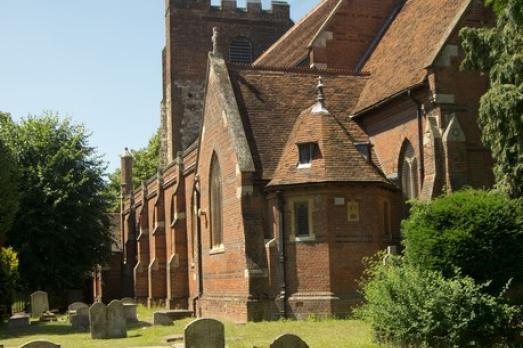The first recorded church was mentioned in 1206, with the first named rector, Thomas Aignell, recorded in 1286, the last Ralph Stevens who came to the church in 1965, remaining until the church closed for worship on 26th February 1978.
Since 1286, the church has had 49 rectors and three different buildings have stood on this location, with the nave and chancel of the current building dating from 1872. The lower part of the tower is the oldest, dating from around 1270, with the ramparts at the top dating from the rebuild of 1911 as the top came loose during the earthquake of 1884.
On 2nd August 1557 six protestants were burnt at the stake by the old Roman walls, next to the church. In total 23 Protestant martyrs were executed in Colchester by burning during the reign of Mary 1st with the others burnt inside the castle bailey.
During the English Civil War, the church tower was used as a gun emplacement by the Royalist army, as they had a clear view looking towards Lexden and the Parliamentary forces who were camped there. They also had a forward cannon position, known as Fort Essex, located near the Lexden Road. On the morning of 14th July 1648 shortly after six, the Parliamentary cannons started firing on the tower of St Mary's with over sixty shots being fired over several hours. These heavy pieces of artillery, one of which fired a 35lb ball and the other an 18lb ball, sent cannon balls smashing into the church and the upper part of the tower. Eventually the tower was in ruins, the gunner, a one eyed man called Jack Thompson, had been killed as the cannon and tower came down.
Some think that the nursery rhyme Humpty Dumpty refers to these events. Humpty Dumpty was a large cannon used to bombard the Parliamentary forces from the Town walls. After sustaining the attack for around a month with no significant success, the Parliamentary forces turned their attention to Humpty with cannon fire of their own. A successful shot to the foundations in which Humpty sat upon, ensured the cannon ‘had a big fall’ and came tumbling to the ground. The cannon was irretrievable by the Kings men and the town eventually fell under Parliamentarian control, who won the Civil War in 1649.
After the church closed for regular worship, the congregation moved to the new church of Christ Church in Ireton Road. St Marys was converted for use as an Arts Centre, opening for business in 1980 and today provides an array of varied entertainment from live music to comedy events, including a monthly farmer’s market.




